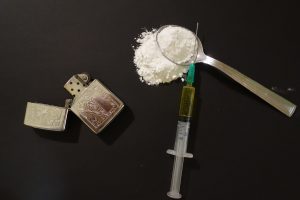Across rural America, communities are grappling with a silent yet deadly crisis: fentanyl contamination in the drug supply. In 2022 -2023 over 100,000 people in the US died from overdose. With an unregulated drug supply, fentanyl has become the primary driver of overdose deaths across the United States. The risk is particularly acute in rural areas where resources are scarce, the drug market is unpredictable, and the stigma surrounding drug use creates additional barriers to healthcare and other protections from overdose.
We recently conducted a study exploring the strategies of people who use drugs in rural areas of the US to reduce the harms associated with unintentional fentanyl exposure. Our findings, drawn from over 349 semi-structured qualitative interviews conducted across ten states and 58 rural counties between 2018 and 2020, provide a critical look at how these individuals are navigating the dangers of fentanyl. Here’s what we learned.
Awareness and Fear: The Reality of Fentanyl in Rural America
One of the most striking findings from our research is the pervasive awareness of fentanyl contamination among people who use drugs in rural areas. Almost every participant in our study recognized that fentanyl had saturated the drug market, affecting both opioid and stimulant supplies. This awareness, however, is not just a passive understanding. It is coupled with an overwhelming fear of fatal overdose. For many, this fear drives the adoption of various harm reduction strategies aimed at avoiding the lethal consequences of ingesting fentanyl unknowingly. Of note, fentanyl is currently dominating the drug supply and for the most part fentanyl exposure is unavoidable.
Harm Reduction: A Multifaceted Approach
In response to the fentanyl crisis, people who use drugs in rural areas have developed a range of strategies to protect themselves. Here are some of the key approaches we identified:
- Avoiding Certain Drugs: Many participants reported deliberately avoiding drugs they believed were more likely to contain fentanyl, such as heroin. For some, this meant switching to other substances perceived to be safer. The decision to avoid heroin, in particular, often stemmed from personal experiences or witnessing the overdose of friends and family members.
- Buying from Trusted Sources: Participants emphasized the importance of purchasing drugs only from dealers they knew and trusted. This relationship often goes beyond a simple transaction. Dealers would sometimes warn participants about dangerous batches of drugs or even refuse to sell certain products they knew contained fentanyl.
- Using Fentanyl Test Strips: Some participants reported using fentanyl test strips to check their drugs before use. These strips, although limited in their ability as they do not provide information on the amount of fentanyl present, provide a critical first line of defense, alerting people to the presence of fentanyl.
- Adjusting Drug Use Practices: To mitigate the risk of overdose, many participants altered their drug use practices. This included taking smaller doses, avoiding injection and choosing to smoke or snort their drug instead, and using drugs in the company of others who can assist in case of an overdose.
- Carrying and Using Naloxone: Naloxone, a medication that can reverse opioid overdoses, is a vital tool in preventing fatal overdose. However, access to naloxone was uneven, with some participants reporting that it was more readily available in urban settings. Those who had access to naloxone often carried it with them.
The Role of Community and Social Networks
Our study highlights the significant role that social networks play in harm reduction and overall well-being of rural people who use drugs. In rural communities, where formal support services are often lacking, people who use drugs rely heavily on their social circles for information and assistance. Trusted dealers, friends, and even family members become critical allies to prevent fatal overdose. This informal network of support underscores the gap in formal health services that are desperately needed in these areas.
The Need for Enhanced Harm Reduction Services
The strategies we observed are not without limitations. For one, the availability of fentanyl test strips and naloxone is inconsistent, leaving many rural users without the tools they need to protect themselves. Moreover, while social networks can provide support, they are no substitute for comprehensive harm reduction services such as syringe exchange programs, overdose prevention centers, and accessible drug checking facilities.
We believe that expanding access to these services in rural areas should be a top public health priority. This could include increasing the distribution of fentanyl test strips and naloxone, particularly through community-based organizations that are already trusted by local populations, funding additional harm reduction organizations, and expanding healthcare services. Additionally, implementing more advanced drug checking services, like spectrometry, could provide people who use drugs with more detailed information about their drugs, potentially saving lives.
Conclusion: A Call to Action
As the overdose crisis continues to evolve, so too must our approaches to harm reduction. The strategies that people who use drugs in rural areas employ to protect themselves are both innovative and necessary, but not sufficient. It is imperative that public health efforts adapt to meet the needs of these communities by providing the resources and support required to prevent overdoses and save lives. Crucially, we must also work to dismantle the stigma that surrounds drug use, which only serves to deepen the crisis and isolate those who most need help.
We hope that our research will not only shed light on the challenges faced by rural communities but also inspire action to enhance harm reduction services in these underserved areas. The time to act is now. Lives depend on it.
Bio
Dr. Suzan Walters is an Assistant Professor in the Center of Opioid Epidemiology and Policy at NYU’s Grossman School of Medicine. Dr. Walters’ research focuses on the intersection of stigma, drug use, and harm reduction, working to understand and address the complex issues facing people who use drugs. You can follow our work on Twitter/X at @suzanmwalters


Comments